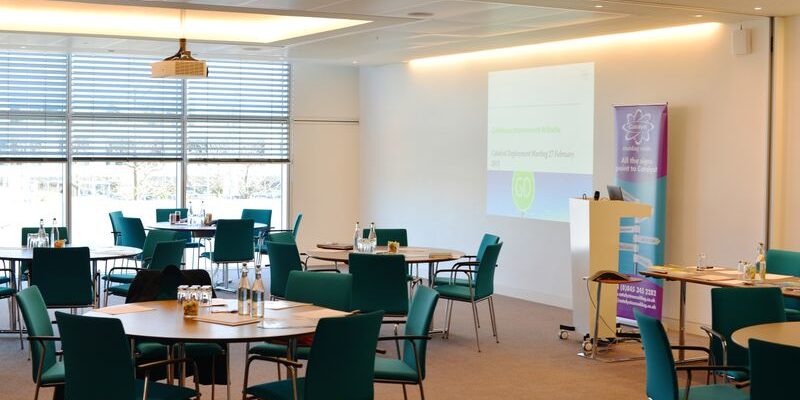 How do you work? ‘Hard’ will undoubtedly be the answer you give to that question, since everybody thinks they work hard and, indeed, most of us do. There are exceptions, of course, and if you’re reading this in the workplace then the chances are that you just raised your eyes from the screen to glance over at the exception in your own particular team (if you didn’t then, guess what, perhaps you’re that exception…).
How do you work? ‘Hard’ will undoubtedly be the answer you give to that question, since everybody thinks they work hard and, indeed, most of us do. There are exceptions, of course, and if you’re reading this in the workplace then the chances are that you just raised your eyes from the screen to glance over at the exception in your own particular team (if you didn’t then, guess what, perhaps you’re that exception…).
Joking aside, most members of any particular workplace team probably do work hard, or at least as hard as they think they’re capable of working, and, since the ultimate end aim of any work process is the delivery of optimum service levels to your customers, then that naturally means that you’re recording 100% levels of customer satisfaction. Except you’re not, because nobody is.
Even the most sharply honed, highly focused and rigorous business process has room for improvement, and the key to creating an ethos of achievable, measurable and sustained improvement lies in analysing every stage of the delivery process and breaking it down to its constituent parts. These parts then need to be held up to the light, twisted, tuned and examined from every different angle to ascertain what the problems are. Everyone in your team may well be working as hard as they can, but a lot of this hard work, in any given process, will be dedicated to getting round the flaws and logjams in that process, even if the people actually doing the ‘getting round’ aren’t aware of it. If your business seems to be performing well enough on a day to day basis and delivering results which you deem to be acceptable, then the chances are that you simply haven’t taken the time to step back and break things down in this manner, but that’s an approach which, ultimately, will lead to failure. This is particularly true if you define failure, as every good business must, as ‘not delivering a service which is as excellent as it possibly could be.’ Left unexamined, the problems in any process cease to be seen as problems and simply become the process per se, and the longer this goes on, the more deep rooted and damaging they become. Too many businesses wait for some kind of crisis to hit before taking stock of their processes, an approach which may well be easy to understand on the grounds that they’re simply too busy running the business to spend time actually improving it, but which ignores the fact that failing processes left unchecked amount to a slow motion crisis in their own right. The last thing any business wants is to turn around in 5, 10 or 20 years’ time and note the money lost, customers disappointed and opportunities missed due to a failure to evaluate and embrace change. When it comes to customer service, maximum efficiency and bottom line outcomes, hindsight may well be 20/20 vision, but foresight combines clarity with practicality and the chance to actually act upon what you see.
All of which puts us in the position of asking exactly how to set about creating the change needed to turn a business around and maximise customer satisfaction. The first point is to evaluate exactly how satisfied your customers currently are. The growth of social media and the ubiquity of digital communication make it easier than ever to create channels of communication with your customers, and the most successful brands utilise this resource to create an ongoing conversation via which they remain constantly aware of how well, or otherwise, they are serving their customers. Don’t wait for people to complain directly, since nine out of ten unsatisfied customers won’t actually take the step of making a formal complaint, they’ll simply go elsewhere. By inviting comment you’ll be gathering the most valuable business intelligence of all – the view from the end of the supply chain. Your customers don’t know how your business runs and, frankly, they don’t care. All they care about is the service which is ultimately provided to them. This enables them to spot problems in your processes which might elude even the most rigorous internal evaluation. If you, as someone running a business, find it difficult to see the wood for the trees, rest assured your customers will be only too keen to point which individual branches leave something to be desired.
One of the key requirements of creating a happy customer base is to create a working atmosphere in which the members of your staff are happy. We started this piece considering the concept of hard work and whether working harder was always the answer (a cursory examination of the hours worked/productivity ratios found in various different countries will underline the fact that the answer to this question is a resounding ‘no’), and most forward thinking management teams will tell you that working smarter is better than working harder. What doesn’t get a mention quite so often is working happier. Low morale will result in a high staff turnover and the kind of churn which is bound to lead to poor customer service. The short sighted view holds that treating your staff well, making the workplace a happy place to be, is only going to cost money, but the truth is that the reverse is true; unhappy staff are expensive staff, since they’re more likely to be inefficient staff, absent staff and, ultimately, staff which need to be replaced.
When change is being implemented, the key to keeping staff happy and engaged lies in involving them with every part of the process from the bottom up, rather than simply imposing it from the top down. Staff at the coalface are more likely to have a keen grasp on the flaws in any system than the management tasked with taking a wider view, and involving them in setting up the change and the way in which its effects are going to be measured will give them ownership of the process from the beginning.
It’s easy to take the processes utilised by your business for granted, but they are actually assets as vital as any other business assets. Viewing them as intangibles which can’t be tackled in a practical manner would be a mistake, since finding ways of evaluating, measuring and improving your processes will enable the very best members of your team to concentrate on letting their talents shine rather than, as might currently be the case, using their talents to get round the problems in the process. A process should be seamless enough to allow excellence fed in at one end to emerge as excellent service at the other, rather than, as is so often the case, being diluted by the logjams, delays and bottlenecks encountered along the way.
The details of change will differ from business to business but the principles remain the same; work with your staff to take your processes apart and find the flaws. Remove these flaws and put them back together in a manner which takes full advantage of the best, smartest and happiest work which your staff are capable of offering, and never make the mistake of thinking you’ve finished improving things. By instigating an ethos of constant and positive evolution you’ll remove the need for periodic bouts of disruptive upheaval.











